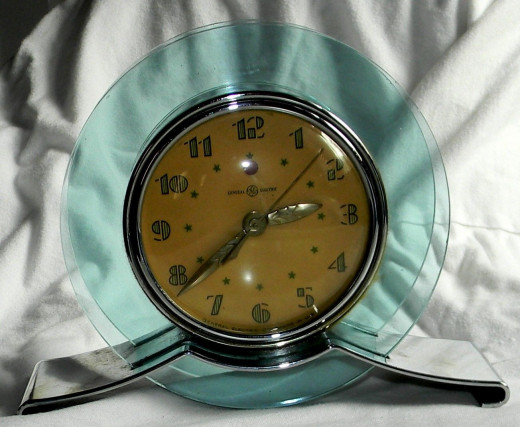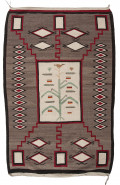Art Deco - Rich or Poor, Now's the Time to Invest
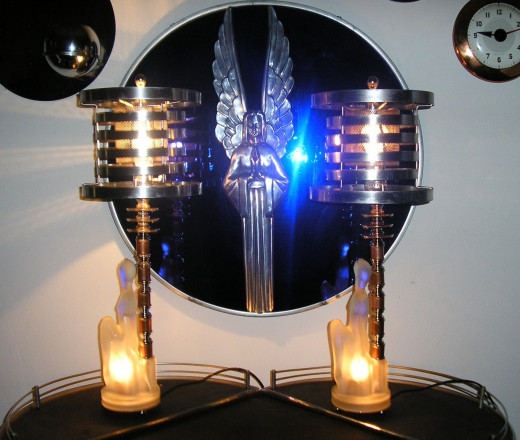
Overview
That collecting art is for the rich only is "a bunch of malarkey." This essay will explain how to go about having the time of your life while procuring items from the Art Deco Period. You can include your friends, your children and even your husband. I assure you it'll be a riot and you'll "ring the cash register" in a handsome way while doing so!
In 1998 I started collecting art with less than a $20 dollar bill. I wasn't even sure what I purchased, the buying impulse on that first item was purely emotional. It just looked good to me, it moved me.
Eventually, through my passion for objects d' art, intense study and hard work I became an expert in the Art Deco Period, the Period between the Wars. Although I had a full-time gig as a professional salesman, I went on to become an antique dealer (part-time). I differentiated my offerings to the marketplace by distinctly focusing on Art Deco (you should do the same). I once had the finest collection of Art Deco in the Midwest. That single Item I bought for $20 bucks sold for $1,600.00 3 years later.
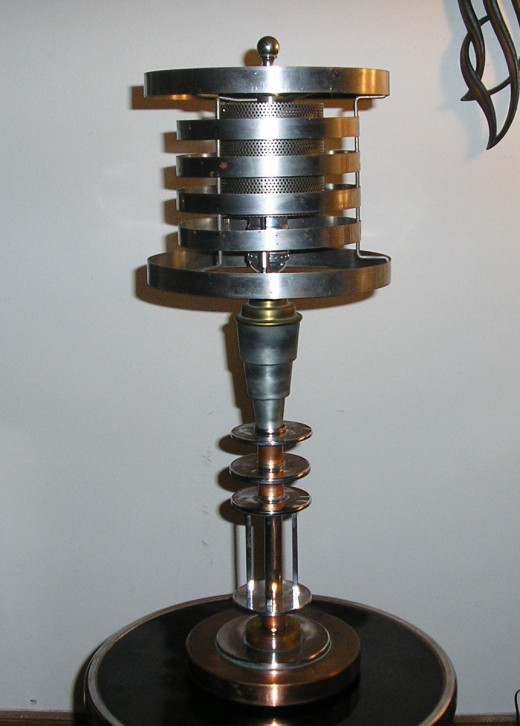
What Is Art Deco
What is Art Deco and when did it begin? That, my good friend, depends on who you are talking to. This arena of "what and when" is extremely complex and somewhat challenging. If you don't have a firm conviction on where you stand it can sink your ship, especially if you choose to become a dealer. In a retail environment, be you a dealer or buyer, you never want to present yourself as uninformed. Some may wish to take advantage of your naivety. Other ears my be listening in as well, your reputation may even take a dent. But fear not...I'm your man, the expert and your personal guide.
Keeping it simple for the time being, Art Deco is a design movement which had it's heyday during the time between the Great World Wars. The Art Deco design movement incorporated, but was not limited to, architecture, all thing related to interior design, jewelry, apparel and transportation vehicles.
Initially, it included original works of art for wealthy individuals (French influence) and as the movement evolved it delivered mass produced items for the general public at price-points most of the common man could afford (that was at least the concept). Modernism, in the jargon of the designer's domain, is when art meets industry (USA influence).


Overview of the Design Movements Leading to Art Deco
The Earliest Design Movement... British & American Arts and Crafts
| 1880
| 1910
|
|---|---|---|
European & American Art Nouveau
| 1880
| 1915
|
Weiner Werkstate (Vienna Workshop)
| 1903
| 1933
|
Bauhaus (House of Building/Germany)
| 1919
| 1933 (ordered closed by Adolph Hitler)
|
European Art Deco (*dates here are the Hub author's professional opinion)
| *1910
| 1940
|
American Art Deco
| 1920
| 1940
|
American Machine Age
| 1930
| 1945
|
Generally accepted as the Evolution to Modernism
Why Collect Art Deco
Art Deco and the designers of that period were influenced by previous design movements which started around 1890; i.e., The British and American Arts and Crafts (1890- 1915), European and American Art Nouveau (1880 - 1910), Wiener Werkstatte (Vienna Workshop, 1900 -1933) and the Bauhaus (House of Building - Germany, 1919 -1933). These earlier movements focused on curvilinear (curved lines) designs while the Bauhaus was at the forefront in establishing rectilinear (geometric) forms.
In 1925 the French put on a symposium/convention to show-off their objects d' art. At the time they were the leaders of all things related to art and design. It was called the "Exposition Internationale des Arts Décoratifs et Industriels Moderne." The term, Art Deco, was coined by a few of the designers that participated and after some years the term became part of the designer's vernacular. NOTE: Germany was not invited. America did not attend as President Coolidge advised the French that we did not have any noteworthy designers.
So, when engaged in casual conversation, 1925 can be regarded as the starting point for the Art Deco Period. However, academically speaking and when educating a client, I use *1910 - 1915 as the beginning. During this timeframe designers (primarily the British) began incorporating the "circle and the square" (let us give due praise to our very own iconic architect/designer, Frank Lloyd Wright for his contribution here). I am of the opinion, though some will debate otherwise, that this is ground-zero of the geometric (rectilinear) theme and thus we have the inception of what would come to be known as Art Deco.
Now comes your Art Deco Bachelor's Degree...the info I'm presenting to you next is the most important tidbit in this essay. This fact will pay substantial dividends, whether you just want to collect a few pieces that you are attracted to or go beyond that and become a dealer.
IN ORDER TO BE AN "OFFICIAL" ANTIQUE AN ITEM MUST BE 100 YEARS OLD
It may come as surprise to you that only a very few of the collectors and novice dealers in the Art Deco community are aware of this. Over the next several years you will witness a "boom" in the pursuit and value of Art Deco. It all boils down to good timing, we just did the math (1910 - 1915), and it's a simple equation. The count-down has started, 100 years is now! Take action!
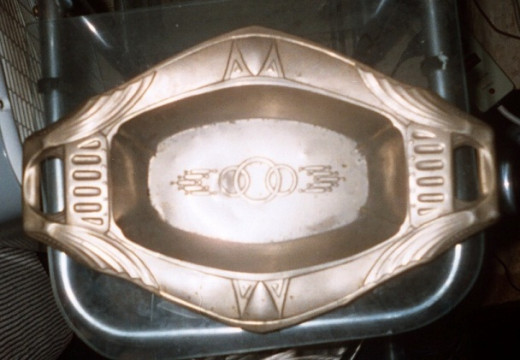
Tips to Help You Get Started
1.) Build your personal library and become an expert on Art Deco.
I had the good fortune of having lunch one day with a successful entrepreneur. He left me with this..."If you read just 15 minutes a day on a topic you will become an expert in that field within six months." Hey, guess what...I bought lunch. It was the best business advice I have ever received. I started my personal library on Art Deco the next day, and I still read everything I can get my hands on. This is precisely the advice I recommend to you.
2.) Stay within your means.
Don't take from the families food budget thinking you found some piece that will bring you a "bonanza." Art Deco items are still plentiful. Once you educate yourself with your new library you will develop a "built-in radar," it will tell you when to pull the trigger on a purchase. Once that happens there will be plenty of opportunities to "fire-away." Until then, stay conservative; there are reproductions on the market that are totally worthless. Always use caution. Lastly, whether you intend to be a collector or a dealer, a good rule of thumb is to seek a minimum return on your investment of 4 to 1. You will find that selling some items is necessary to upgrade the quality of the collection. Of course, there are also times when you fall for a piece and are willing to pay a premium, but be strict with yourself and stay on a course that is always beneficial to you.
3.) Collect that which you gravitate to, stuff that moves you.
Books, toys, posters, letter openers. ashtrays and even jewelry can be had for a bargain on eBay, at antique stores and flea markets. I found a gift for restoring lamps which has been quite profitable (see the photos). Your time to "ring the cash register" will come soon enough. Follow your passion.
4.) Above all else seek pleasure, joy and gratification.
Have a day out with your kids to the flea market. Bring your husband. Teach them to engage in commerce and to invest wisely. You may even want to encourage them to start their own small collection. If you don't have this type of experience, then drop everything and go bowling.
You have my best. Let's have a grand 2014 and GOOD LUCK TO ALL!!!!!!! .
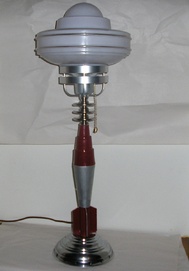
Summation
My mantra is...objects d' art as your friend for life. It's done me nicely. With a fair amount of time, passion and perseverance the idea of collecting Art Deco may just bring you some unexpected good fortune. That is my wish for you. You've read this far, now take action...the time is now!
recommended links...
Collector's Weekly
http://www.collectorsweekly.com/
*** at the Collector's Weekly site, under "Show &Tell," I have 3 lamps in the top 60 of the Art Deco Lamps "Most Popular All-Time" category (those three are shown in this Hub).
Minneapolis Institute of Arts/Modernism
http://new.artsmia.org/
If completely assimilated this site will provide your Doctorates Degree.
"The Blue Rapture" w/rare dual blue Lucite discs. If in excellent working condition the demand for this model could soar.
